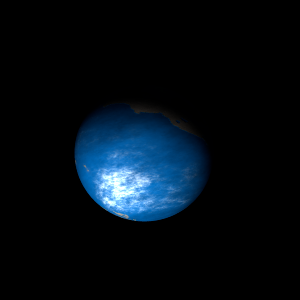|
|
Space Astro
|
Info for exoplanet "Nakyu Shi"
| Scientific (actual) data |
|---|
| Name | K2-80 c |
| Planet status | Confirmed |
| Radius | 0.131 |
| Orbital period | 5.605 |
| Semi major axis | 0.0596 |
| Discovered | 2016 |
| Updated | 2021-02-05 |
| Tconj | 2457070 |
| Publication | Published in a refereed paper |
| Detection type | Primary Transit |
| Alternate names | 2MASS J03560900+1333334 c, EPIC 210403955 c, EPIC 210403955.02, WISE J035608.99+133332.8 c |
| Star name | K2-80 |
| Right ascension | 59.04° |
| Declination | 13.56° |
| Mag j | 10.874 |
| Mag h | 10.425 |
| Star distance | 201.96 |
| Star mass | 0.9 |
| Star radius | 0.87 |
| Star temperature | 5441 |
| Star alternate names | 2MASS J03560900+1333334, EPIC 210403955, WISE J035608.99+133332.8 |
| Wikipedia article | K2-80 c |
Back
| |
| Fictional info (?) |
|---|
| Suggested name | Nakyu Shi |
| Planet type | Hot planet |
| The largest moon, Ejupya Techi Fu, has a diameter greater than that of the planet Mercury. |
| Atmosphere | Hydrogen peroxide | 98% |
| Ammonia | 1.9% |
| Atmospheric pressure | 2.5 bar |
 |
| Moon | Fuahyo-kume | Huge slightly egg-shaped rocky moon |
| Ejupya Techi Fu | Very small slightly egg-shaped rocky planetoid |
| Gobuda | Medium-sized almost round gaseous moon |
| Zedapu Heru | Large slightly egg-shaped rocky comet |
| Nyushi | Small almost round rocky asteroid |
| Sumyo Bo | Medium-sized round rocky asteroid |
| Guwa Chi | Very small slightly egg-shaped rocky planetoid |
| Google search for Nakyu shi |
|
Website by Joachim Michaelis
|
|
|
|